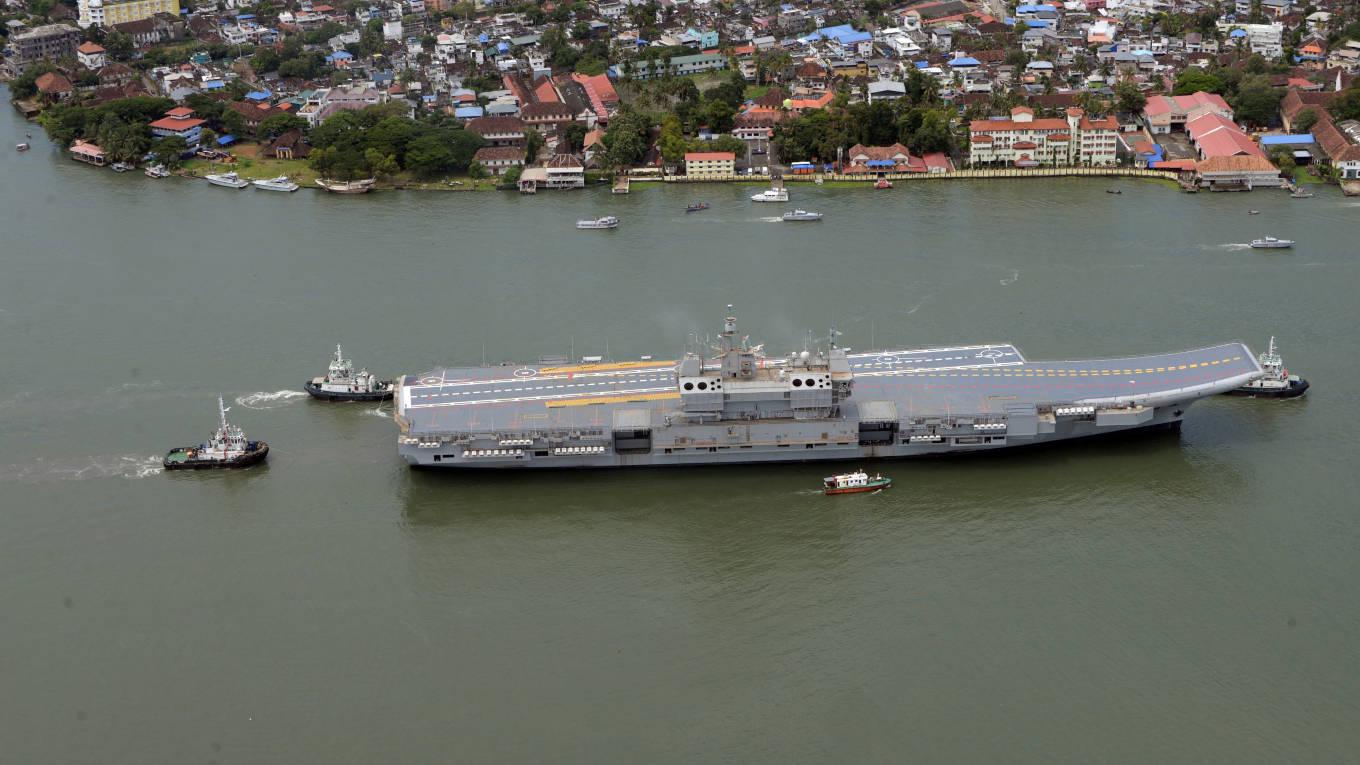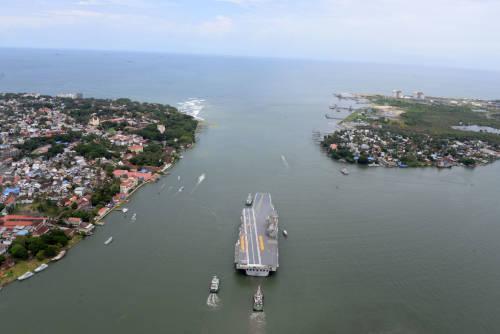It was a proud moment for India on 4 August when the country’s first “Indigenous Aircraft Carrier” (IAC), Vikrant, took to sea for the first time for a series of rigorous sea trials. The combat capability, reach and versatility of this largest and most complex warship ever to be designed and built in India will add formidable capabilities to our country’s defences, said Defence Minister Rajnath Singh on the occasion. The 37,500t STOBAR (Short Take-Off But Arrested Recovery) carrier is scheduled for commissioning next year around the time India commemorates her 75th year of Independence on 15 August. It has been designed by the Navy’s Directorate of Naval Design (DND) and constructed by the state-owned Cochin Shipyard Limited (CSL) at a cost of around $3.3 billion. As with most military projects in India, Vikrant too has had a tortuous chronology that has delayed its commissioning by seven years. Its design was conceived in 1989, but work began only a decade later. The keel was laid another decade later, in 2009, and the hull was floated out of its dry dock in 2011 and finally launched in 2013. The project provided employment for 2,000 CSL personnel and about 12,000 employees in ancillary industries. Around 550 Indian firms, including about 100 MSMEs (micro, small and medium enterprises), registered with CSL to provide diverse services for the construction of the carrier. The Defence minister claimed the project had attained 76 per cent indigenous content. Vikrant has a maximum speed of 28kts and cruising speed of 18kts, with endurance of about 7,500nm. Its length measures 262m, while it has a beam of 62m and height of 59m, including the superstructure, enabling it to accommodate 20 fighter jets and 10 helicopters. There are 14 decks in all, including five in the superstructure. The ship has over 2,300 compartments, designed for a crew of around 1,700 people, including specialised cabins to accommodate female officers. When the IAC joins the Navy, it will sail without an Aviation Facility Complex (AFC) that will be supplied by Russia’s Nevskoe Design Bureau (NDB) by the end of next year to support a carrier air wing comprising MiG-29K fighter aircraft, Ka-31 airborne early warning helicopters, MH-60R multi-role helicopters, as well as the indigenous Dhruv Advanced Light Helicopters. In keeping with the Indian Navy’s aspirations for “adequate power projection in and from the seas, and for sea control capability in ‘blue waters’, to safeguard interests and counter threats before they can bear upon India”, its ‘Indian Maritime Security Strategy Document’ of 2016 propounds a force structure focused on the development of three Carrier Battle Groups (CBGs), each centred on an aircraft carrier with multi-mission escort and support ships with integral anti-air, anti-surface and anti-submarine warfare capabilities. This entails the development of an operational capability of two Carrier Task Forces (CTFs), each comprising one or more CBGs and other specialist forces, to meet the growing requirements of protecting India’s maritime interests. However, only two carriers have been envisaged for the present, with Vikrant joining the fleet alongside the Navy’s 44,750t ex-Russian INS Vikramaditya (former Admiral Gorshkov), which too is a STOBAR carrier and which joined service in 2013.
-

Vikrant: India’s first “Indigenous Aircraft Carrier”; Courtesy: Indian Navy


































